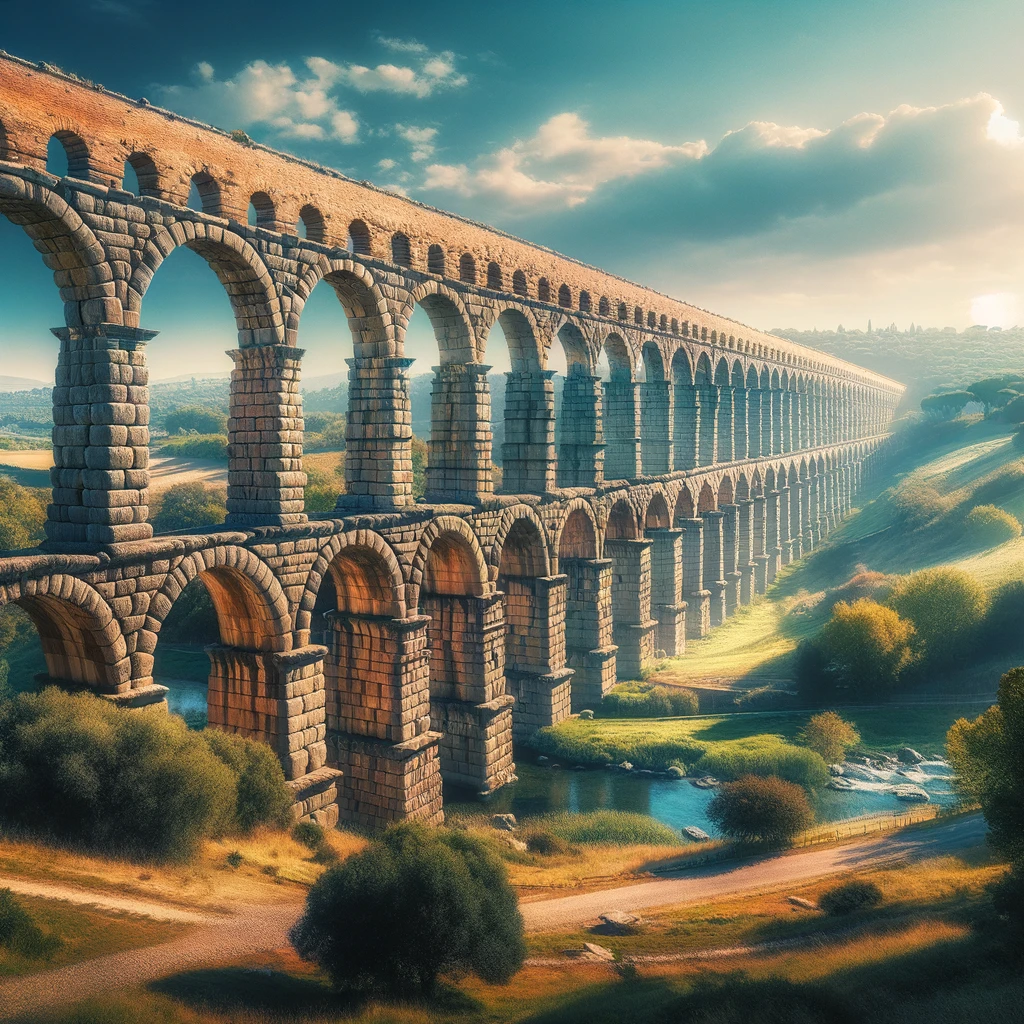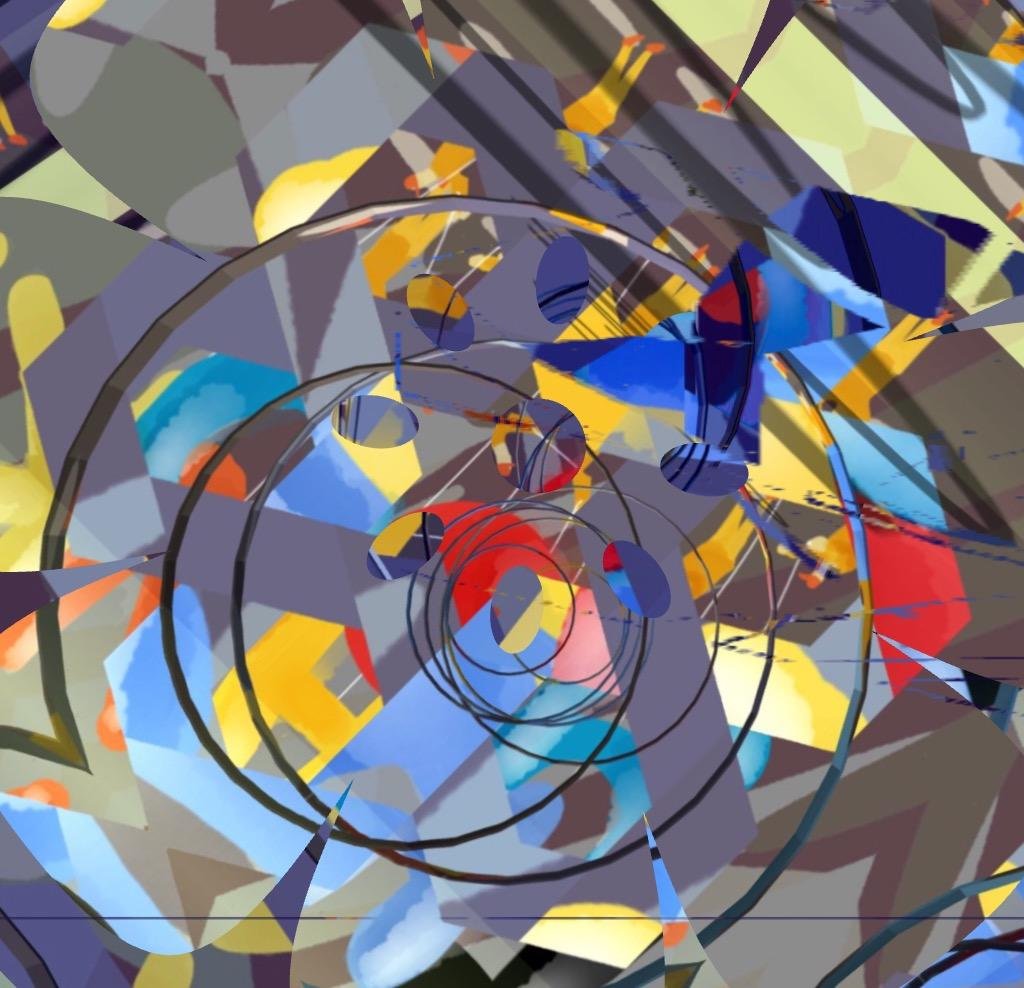
Table of Contents
A random fact about the Roman Empire
The Romans were known for their advanced engineering and architectural skills. One impressive example of their engineering prowess is the construction of the Roman aqueducts. These ancient water supply systems were designed to transport fresh water from distant sources to cities, allowing them to have a reliable and clean water supply.
One remarkable aqueduct, the Aqua Claudia, was built in the 1st century AD by the Roman Emperor Claudius. It spanned a distance of over 68 miles (109 kilometers) and was supported by arches that stretched across valleys and hills. What’s fascinating is that some portions of the Aqua Claudia are still standing and in use today, nearly 2,000 years after they were built, serving as a testament to the engineering skill and durability of Roman construction.
Roman Aqueducts a Triumph of Ancient Engineering and Water Management
The Roman Empire, renowned for its architectural marvels, was also a pioneer in hydraulic engineering. Among its impressive feats of infrastructure, the Roman aqueducts stand out as masterpieces of ancient engineering and water management. These remarkable systems transported fresh water over vast distances, ensuring a reliable supply for cities and their inhabitants. In this article, we will delve into the history, construction, and engineering behind these incredible structures, which continue to inspire awe and admiration to this day.
The Historical Context
To appreciate the significance of Roman aqueducts, we must first understand the historical context in which they emerged. The need for a reliable water supply became paramount as the Roman Empire expanded, and urban centers grew in size and population. Prior to aqueducts, people depended on local sources like wells and rivers, which often led to water scarcity and unsanitary conditions. Recognizing the importance of fresh water for public health and urban development, the Romans embarked on ambitious projects to bring water from distant sources.
The Construction of Roman Aqueducts
The construction of Roman aqueducts was a complex and labor-intensive process that required meticulous planning and engineering expertise. Here are the key steps involved in building these impressive structures:
- Source Selection: Roman engineers carefully selected reliable water sources, often in mountainous regions. Springs and rivers located at higher elevations were preferred because gravity could assist in water flow.
- Surveying and Planning: Engineers surveyed the terrain between the water source and the city to determine the best route for the aqueduct. They used various tools, including leveling instruments and plumb bobs, to ensure a consistent downward slope.
- Channeling Water: Aqueducts typically consisted of a combination of tunnels, channels, and arches. Tunnels were dug through mountains or hills when necessary, and channels were constructed to carry water across open terrain. Arches were built to support the aqueducts when they crossed valleys or low-lying areas.
- Materials and Construction Techniques: Romans used a variety of materials, including stone, concrete, and lead pipes, to construct their aqueducts. The use of concrete, known as “opus caementicium,” was a groundbreaking innovation that allowed for durable and watertight structures.
Engineering Marvels
The engineering feats achieved by the Romans in constructing aqueducts were nothing short of remarkable:
- Precise Gradients: Engineers maintained a consistent gradient, often less than 1 meter per kilometer, to ensure a gradual descent and prevent water from flowing too fast or too slowly.
- Arches and Siphons: The use of arches in aqueduct construction allowed them to span valleys and ravines. Additionally, siphons, which used a combination of pipes and air pressure, enabled aqueducts to cross depressions without the need for continuous arches.
- Water Quality Control: Romans built settling tanks and filtration systems to remove impurities and sediment from the water, ensuring a clean and reliable supply.
- Maintenance: Aqueducts required regular maintenance to clear blockages and repair damage. Skilled technicians and laborers were employed for this purpose, emphasizing the Romans’ commitment to the upkeep of their water infrastructure.
IV. Legacy and Continuity
The Roman aqueducts left a lasting legacy, not only in terms of engineering but also in the development of urban centers. The reliable supply of fresh water contributed to improved sanitation, public health, and the growth of cities throughout the Roman Empire. Remarkably, some aqueducts continued to function for centuries after the fall of the Roman Empire, as subsequent civilizations recognized their value and undertook maintenance efforts. Even today, some remnants of these ancient marvels can be seen in various parts of Europe and North Africa.
Conclusion
Roman aqueducts represent an enduring testament to the ingenuity and engineering prowess of the ancient Romans. These remarkable structures played a pivotal role in shaping urban life during the Roman Empire, and their construction techniques continue to inspire admiration and study in the modern era. The legacy of the Roman aqueducts serves as a reminder of the lasting impact of innovative infrastructure projects on society.
Enjoy ??? the Roman aqueducts
written and illustrated with help of openAI Language models and Dalle
Take time to learn
Invest in your future
Embark on a journey into the realm of affiliate marketing and craft your own website within a vibrant, supportive community. Join me in this adventure, where you can begin as a free starter and stay as long as you desire. Enjoy complimentary hosting and foundational teachings to set you on your path. For those with advanced skills, opportunities to elevate your expertise await. Take a moment to explore and witness the magic for yourself!




